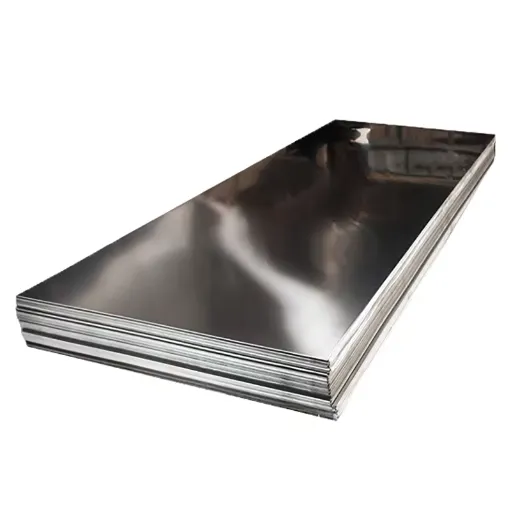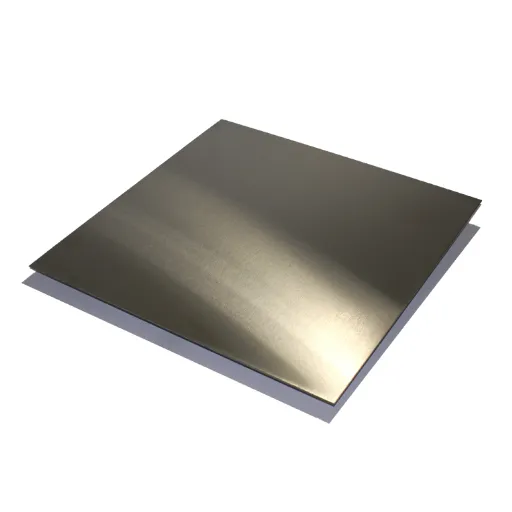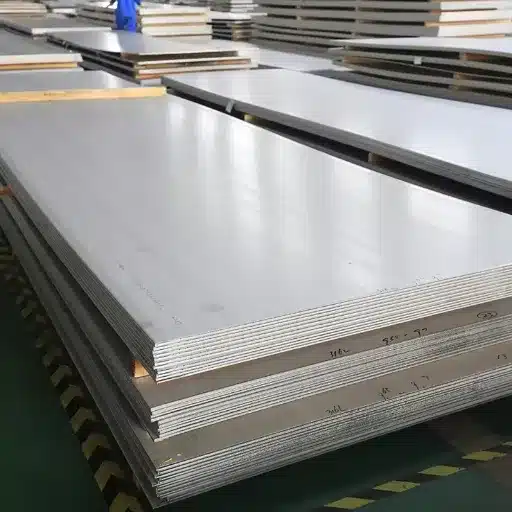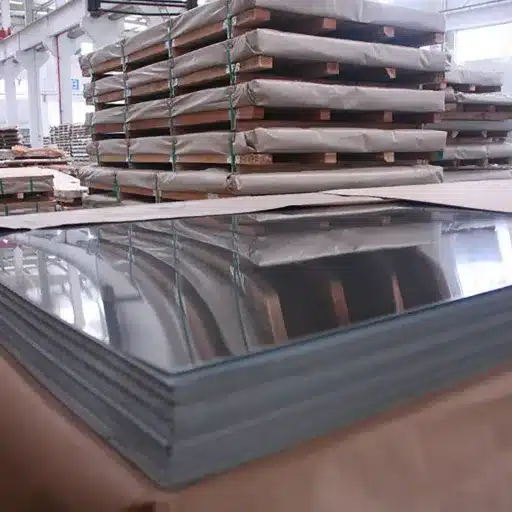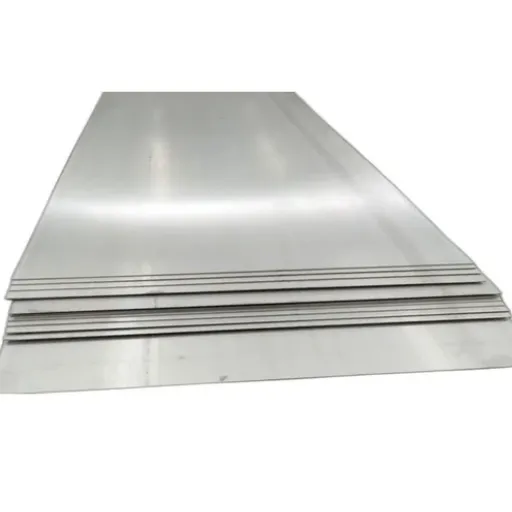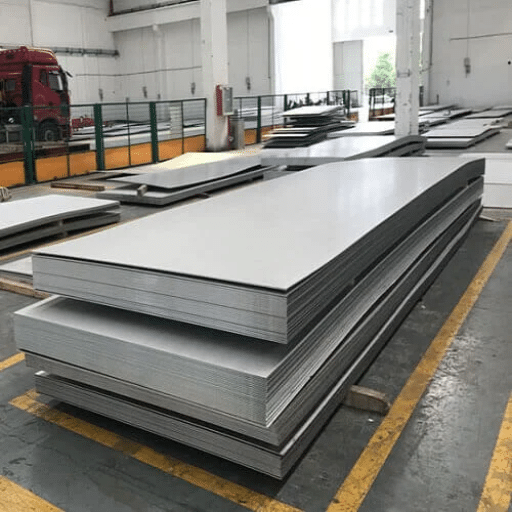Selecting the best dinnerware for kids requires weighing practicality, safety, and durability simultaneously and in equal measure. Stainless steel kids’ plates are like an answer to the prayers of parents who want all these features combined. Stainless steel plates are eco-friendly, resistant to damage, and unlike traditional plastic or ceramic alternatives, can survive the onslaught of children’s mealtime enthusiasm. In this article, stainless steel plates will be discussed in the context of the benefit of hygiene, cost-effectiveness, and durable family products to help you make the best decision for your family. From parents who want to be eco-friendly to those looking for reliable dining solutions, everyone will understand the trend of why these plates are emerging as the best choice.
What are the Benefits of Using Stainless Steel Kids Plates?

- Durable and Long-Lasting
Stainless steel plates remain the best children’s plates due to their food-grade material properties combined with protective coatings that offer resistance to corrosion. Having no weak points, the stainless steel plates are perfect for active mealtimes filled with joyful unpredictability. Best of all, they withstand daily use through time without impact on their appearance.
- Hygienic and Easy to Clean
Not harboring bacteria means that stainless steel products are nonporous, and are resistant to harboring any more microorganisms, mold, etc. Furthermore, every meal can be sanitized with ease due to the product being dishwasher friendly.
- Non-Toxic and Safe
Equally important, plastic plates are packed and composed of chemicals that are threatening towards human life. BPA, phthalates, and lead are some of the chemicals that can be actively found in plastic plates, making their stainless steel counterparts devoid of the same risks. Having a meal when these chemicals can or will seep into food is a better experience to enjoy.
- Environmentally Friendly
For families that prioritize eco-friendly options, stainless steel works as a dishware for the family because they are completely recyclable and do not contribute to relying on disposable or plastic dishes. Their environmental impact is less harmful due to the lack of plastic waste.
- Lightweight and Kid-Friendly
Most stainless steel plates are made lightweight and are easy to grip so children can use them comfortably. This makes it a sensible dining option for children.
Durability and Longevity of Stainless Steel Dinnerware
Plastic is easily scratched and becomes unsightly after a short time, especially when used regularly. Stainless steel dinnerware is world renowned for being scratch proof and resistant to wear and degradation, making them usable frying pan resistant. Being tarnish proof is key towards being scratch proof. Without tarnishing, it is impossible for a product to change surfaces. No scratches can be achieved once the surface remains unchanged, allowing the product to stay looking brand new. Unlike most plates, stainless steel is resistant to scrapes giving it a longer life span. This makes it perfect for homes with kids or frequently used in hectic settings.
Moreover, good quality stainless steel dinnerware like that manufactured from 18/8 or 18/10 steel grades is dinnerware that has undergone rigorous processes to withstand distortion from heat, scratching, and denting. These products retain their pristine structural and aesthetic form even under conditions of repeated washing or high-temperature cooking for long periods of time. Further studies show that the products can last decades which significantly reduces the need for replacements. This not only contributes to cost saving but also to environmental sustainability.
Non-Toxic and Safe Material for Children
Stainless steel’s non-toxic properties mean the product is safe for children and further enhances its practicality. Besides, its inert nature means it doesn’t leach chemicals when exposed to heat or acidic foods, so it has no reason to be considered dangerous. Unlike plastic or other certain coatings, Stainless steel does not contain BPA, phthalates, or any other harmful substances that put people’s health in danger. More recent studies have also confirmed it is one of the safest materials for baby bottles, knives, and containers because there is no TopPT toxicity, and its permissive qualities leave it being described as inert. Furthermore, it is safer than these materials since the surface does not allow bacteria to accumulate. This means parents can depend on these materials for long-term protection for children’s health.
Easy to Clean: Dishwasher Safe Features
Household items made of stainless steel are on high demand because its dishwasher safe. The grade stainless steels with non-porous surfaces also resist high-temperature cleaning cycles and cleaning over time provides no warping to the items. Items are also considered appealing and functional due to the lack of corrosion and staining caused from repeated cleaning. The modern stainless steel cleaning technology of advanced dishwashers is a great addition, as most of them clean through spraying and use of detergents specially designed for stainless steel. These features combined greatly simplify product hygiene and preserve the lifespan of the products.
How to Choose the Right Stainless Steel Toddler Plate?
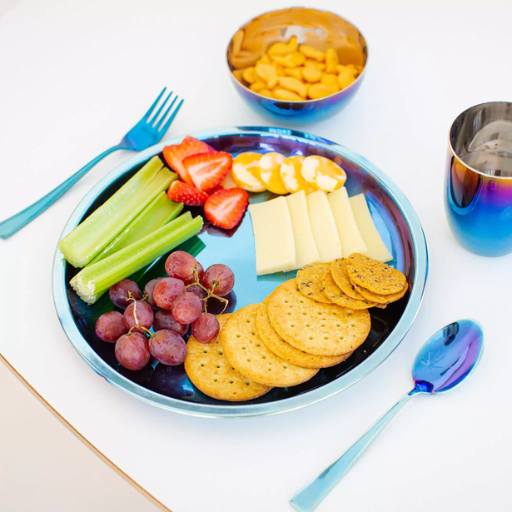
To select the right toddler plate, keep in mind these three critical aspects. These details are integral in ensuring comfort and safety fit for children.
- Safety and Protection: Outlines should be smooth, rounded, and void of angles that may allow for harmful chemicals like BPA and phthalates.
- Fabrication: Strive for toddler-friendly, non-engraved divisions that separate meal sections for easy feeding.
- Ergonomics: Getting plates should be easy for children’s hands.
- Cleaning is Simple: It’s best to buy dishwasher-safe plates, but also check that the plates can be cleaned thoroughly.
- Easy Maintenance: Pick plates that can sustain drops and heavy use and will last through repeated meals and washes.
By addressing each of these suggestions, you will ensure that the stainless steel toddler plate you choose is safe, practical, and engineered to accommodate your child.
Size and Shape: Divided Plates vs. Standard Plates
When choosing a plate for toddlers, the size and shape are important when it comes to meal arrangement and portion control. Divided plates feature segmented sections which are practical for nutrition therapy that aims to offer various food groups separately. These plates can also prevent food mixing which appeal to toddlers who are picky eaters or have strong preferences about food separation.
Standard plates, on the other hand, can be used for other purposes that do not require segmentation. Unlike divided plates, standard plates do encourage a toddler to more inventive with food combinations, fostering an adventurous palate as they grow older.
Healthy eating habits amongst children can be encouraged through visual portion control, as the Divided Plate Method suggests. Standard plates are adaptable for family-style meals, while divided plates promote balanced servings of proteins, grains, and vegetables. Both plates can contribute to a positive mealtime experience depending on the child’s development stage and preferences.
Considerations for Toddler-Safe Edges and Designs
Using tableware for toddlers should prioritize safety along with functionality to minimize any chances of risk while ensuring ease of use. Smooth edges that are cut free from any sharp corners and nontoxic materials with an anti-slip feature will sturdy the tableware during use. Lightweight durable materials that allow toddlers to grasp the tableware while honing their fine motor skills are designed for easy holds. Colors and designs molded into the piece promote a positive experience which strengthen emotional associations providing the child and care giver a pleasurable time together flavored with meals.
Are Stainless Steel Plates and Bowls Dishwasher Safe?
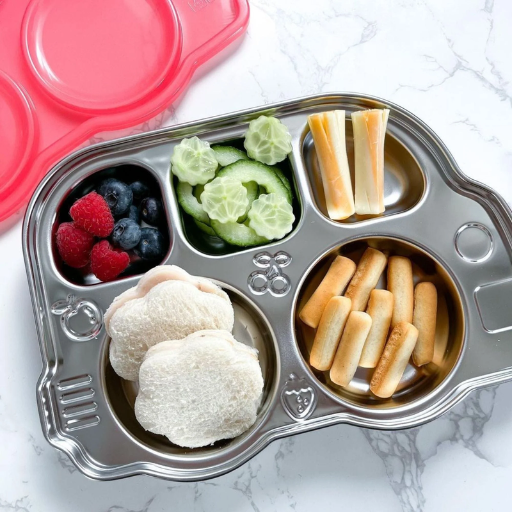
Of course, most stainless steel plates and bowls are dishwasher safe. The suitability of stainless steel to endless wash cycles in dishwashers due to its strength and resistance to rust makes it a stainless steel plate and bowl set for dishwashers. Still, checking the manufacturer’s guidelines is crucial since some designs and finishes might require manual washing to retain their appearance. Also, do not put strong cleaning agents as well as low or high temperature washing cycles because of possible slow oxidation or spoiling over time.
Cleaning Tips for Maintaining Your Steel Dishes
- Rinse Immediately After Use
Caked-on food residues will pitting on stainless steel if left unwashed, more so those with salty or acidic substances. Therefore, contact with these materials should be minimized so rinsing steel dishes promptly becomes a necessity.
- Use Mild Detergents
When cleaning, use non-abrasive pH-neutral washing fluids. Do not use abrasive substances such as chlorine-containing cleaners because those will strip the stainless steel’s Chromium Oxide layer and protective barrier against rust.
- Avoid Abrasive Scrubbers
The use of abrasive scrubbing pads can result in scratches to the exterior of your dishes. These scratches make the dishes a target for staining and tarnishing. Instead these dishes should be cleaned with a soft cloth or effective sponge.
- Dry Thoroughly After Washing
To avoid streaks or spotting left from minerals, use a soft cloth to dry the dishes immediately after washing. Marks can be left during air-drying, especially in hard water areas.
- Polish Periodically
To preserve the appearance of steel dishes, apply specialized stainless steel polish or a baking soda mixture. Polish should be applied along the grain finish to prevent streaks.
Your stainless steel dishes will retain their beauty and remain in good working condition for years, even with regular use, if you follow this five-step guide. In addition, these steps effectively maintain the cookware’s shine and overall condition.
What to Avoid When Washing Stainless Steel Kids’ Plates
Never strain the stainless steel children’s plates to keep them looking brand new because it can permanently damage their sleek look. Do not wash them with abrasive steel wool because it leads to scratching, not to mention removing the sleek aesthetic the plates have. Don’t put them through washes with chlorine bleach as these chemicals lead to pitting and discoloration. Dishwashers need to carefully assess—most stainless steel items are dishwasher safe, however, over time, spotting and discoloration may occur from extreme heat drying cycles, or contact with reactive metals that may not even be seen in other parts of the dishwasher. Do not stack wet plates directly on top of each other, as moisture encourages the staining or water spotting. This caring practice safeguards the stainless steel surfaces of kids’ plates and uses clean, safe materials to ensure durability. These steps help guarantee the plates are safe for continuous use and visually clean.
What Types of Stainless Steel Dinnerware Sets are Available?
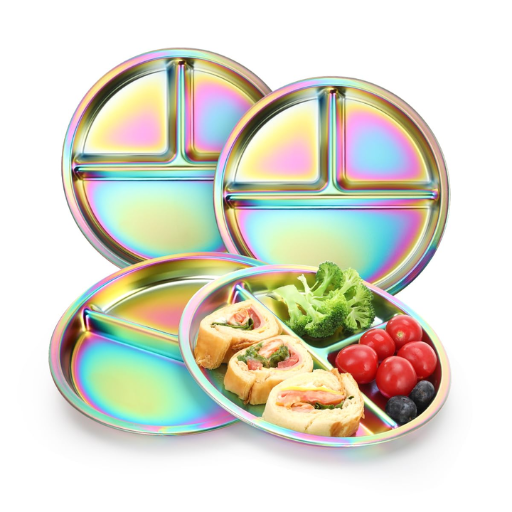
Stainless steel dinnerware sets come in an assortment types to suit everyone’s needs and personal preferences:
- Basic Sets: As the name suggests basic sets which usually include plates and bowls for everyday use which also serves as durable, lightweight, and easy to clean.
- Children’s Sets: Smaller plates and bowls as well as rounded utensils for children with smooth edges so as not to cause cuts or scrapes.
- Camping or Outdoor Sets: These sets offer portability and include cups and utensils stored within larger items for added convenience.
- Premium Sets: These often feature ornate touches and glossy finishes, useful for formal gatherings or special occasions.
All types are made to optimize usability, resilience, and visual appeal equally.
Overview of Stainless Steel Baby Plates and Toddler Plates
Stainless steel baby plates and toddler plates are increasingly recognized as a practical and sustainable choice for children’s mealtime needs. These plates are typically made from food-grade stainless steel, such as 18/8 or 304 stainless steel, ensuring they are non-toxic, BPA-free, and resistant to rust and corrosion. Stainless steel provides durability, allowing the plates to withstand drops, scratches, and prolonged use without compromising their integrity. Stainless steel plates also specific for younger children have features such as divided compartment sections for easier portioning and for picky eaters which aids in controlling mess. Another useful feature of these designs is the silicone suction bases that are used to prevent the plates from sliding, which is helpful for toddlers that are learning to self-feed. Apart from this, stainless steel does not hold odors or stains from food which helps trump the hygiene aspect of eating and simplifies the cleaning process.
Strong stainless steel baby plates and toddler plates, as a result, help parents meet the tough expectations coming from both children and adults thanks to their optimized safety features, modern designs, and unmatched durability. Parents will also love the environmental side of them since plates are safe to use multiple times and can be recycled, providing a green alternative to their plastic counterparts. The plates come in a multitude of designs and sizes which means they can be used by infants and toddlers making the plates a worthwhile purchase for families.
Features of Comprehensive Kids Plates and Bowls Sets
With multifunctional safety features, zinc alloy cups, including full kids plates and bowls sets, are created with ease and safety during use. The mealtime needs of children also require innovatively designed materials. Here’s a set of the most prominent ones we included:
- High-Grade Material Composition
- Best-selling sets include food-grade stainless steel with silicone or plastic that is BPA-free, which ensures long usage and safety.
- Steel parts of the silicone sets are known to be non-corrosive, ensuring long-term use without wear.
- Non-Toxic and Certified
- The components within these sets are made with materials that are certified by FDA, LFGB, and EU regulations, proving their stringent safety standards.
- Does not contain the harmful chemicals BPA, PVC, and phthalates, which promote a safer dining experience for kids.
- Break-Resistant Construction
- In addition to providing safety, the plates and bowls are reinforced with shatter-resistant properties which protect them from shattering due to accidental drops. This ensures safety and enhances lifespan.
- User-Friendly Designs
- Arranged plates aid in putting food in appropriate portions which prevents flavor blending, promotes a balanced meal, and encourages proper nutritional habits.
- To improve safety during use, all components have rounded edges and smooth finishes to eliminate sharp edges.
- Temperature Resistance
- Most sets are easily adaptable thermally comfortable from freezing to heating, silicone parts range from -40°F to 450°F.
- Versatility and ease of maintenance are added with microwave and dishwasher-safe features.
Parents are reassured of the safety, functionality, and durability while eliminating environmental concerns, by selecting a comprehensive kids’ plates and bowls set. These features enhance mealtime for families.
How Do Stainless Steel Kids Plates Compare to Plastic Alternatives?
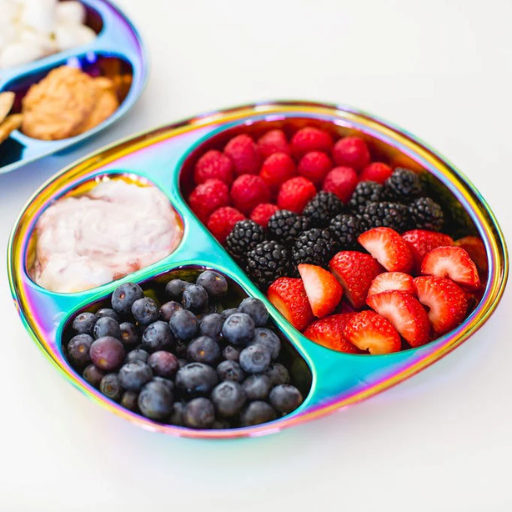
Stainless steel kids’ plates offer several advantages over plastic alternatives, primarily in terms of durability, safety, and environmental impact. Unlike plastic, stainless steel is free from harmful chemicals such as BPA and phthalates, ensuring safer contact with food. It is highly resistant to cracking, warping, or staining, making it a more durable choice for long-term use. On the other hand, stainless steel is fully recyclable and plastic is a huge contributor to pollution and other wasteful tremendows. These make plastic plates lighter and could embroider a beautiful design for more children. Therefore, stainless steel plates should be adopted by parents who need to have peace of mind knowing they are putting their money on top-grade safety, lifespan, and sustainability.
Health Implications of Using Plastic vs. Stainless Steel
In the case of assessing the health aspects of using plastic vs stainless steel, considering the dangers of harmful chemical leaching is vital. Certain types of plastic, especially those manufactured with BPA or Phthalates, are capable of leeching harmful chemicals into food and drinks when subjected to heat or softened by an acidic environment, particularly below eight Ph value. As this chemicals are ingested for long periods of time, studies show it can lead to endocrine disruption, reproduction problems, and increase the chance of chronic diseases such as cancer.
On the other hand, the risk posed by stainless steel is minimal considering that it is an inert material which does not leach or corrode. It does not react with any food or liquid it comes into contact with which aids in preserving the food substance. Also, stainless steel is non-porous and can be easily cleaned effectively, which bacterial contamination is a problem, less likely. This enhances the health aspects of stainless steel and makes it safer and more reliable for food applications.
Environmental Impact: Choosing Non-Toxic Dinnerware
Choosing non-toxic dinner sets greatly mitigates the environmental footprint connected with the creation, use, and disposal of a material. Unlike plastic or melamine composites, which may result in microplastic pollution, stainless steel, bamboo, glass, and ceramic are much less likely to release toxic gases when manufacturing or degrading. For example, bamboo is a great alternative because it renews itself quickly, it grows fast and does not need a lot of water or fertilizers to thrive. Likewise, tempered glass and ceramics do not produce toxins when produced or broken down, and are durable and completely recyclable.
Also, using durable and reusable dinnerware sets cuts down on disposables, which helps minimize landfill waste. Life cycle analyses of materials have shown that non-toxic options are often more straightforward and therefore less energy-intensive, which means less carbon emissions. Every consumer can further sustain the impact by selecting eco-label certified products like LEED or Cradle to Cradle, which endorse the claimed sustainability and safety of materials. Thoughtful choices in dinnerware protect personal health and also help in defending the environment and wildlife for people down the line.
Reference Sources
-
The Best Plastic-Free Bowls, Plates, Cups, and Utensils for Kids – This article discusses the best stainless steel plates for children, including recommendations like the Kiddobloom Children’s Stainless.
-
Why Stainless Steel Matters This Earth Day – Ahimsa – Highlights the environmental benefits of stainless steel, emphasizing its recyclability compared to plastic.
-
Bowl Over Waste with Stainless Steel Children’s Plates and Bowls – Focuses on reducing plastic waste by switching to stainless steel plates and bowls.
-
Kids Plates and Bowls: This Dietitian Mom’s Top Picks – Discusses the durability and non-toxic nature of stainless steel plates for children.
-
Why Stainless Steel Plates Are the Best Option for Your Baby – Explains the hygienic benefits of stainless steel plates, such as being dishwasher safe and odor-resistant.
Frequently Asked Questions (FAQs)
Q: What are the benefits of using stainless steel kids’ plates?
A: Stainless steel kids plates are durable, non-toxic, and easy to clean. They are also resistant to staining and do not retain odors, making them a safe option for kids’ mealtime. Additionally, they are eco-friendly and can last for years, reducing waste compared to disposable plates.
Q: Are there plates for kids that come with suction features?
A: Yes, there are steel kids plates with suction that help keep the plates in place during mealtime. These suction plates are designed to reduce spills and messes, making them ideal for toddlers learning to eat independently.
Q: What is ahimsa stainless steel and why is it important for kids’ dishes?
A: Ahimsa stainless steel is a type of stainless steel that is ethically sourced and produced without harming the environment or living beings. Using ahimsa stainless steel plates for kids ensures that their dishes are safe and free from harmful chemicals, making them a great choice for mindful mealtime.
Q: Can I find a divided plate for my toddler?
A: Yes, there are stainless steel divided plates available that are perfect for toddlers. These plates help with portion control and allow for serving different food items separately, making mealtime more organized and enjoyable for kids.
Q: Are there any specific kids’ utensils designed for use with stainless steel plates?
A: Absolutely! There are specially designed kids’ utensils, such as forks and spoons, that are made to complement stainless steel kids’ dishes. Many of these utensils are ergonomically designed to fit small hands, making it easier for little ones to eat independently.
Q: What types of toddler bowls are available for mealtime?
A: You can find a variety of toddler bowls made from stainless steel that are perfect for serving meals and snacks. These bowls are durable, easy to clean, and come in different sizes to accommodate various portion sizes for kids.
Q: Do stainless steel plates come with lids for storage?
A: Yes, many stainless steel plates and trays come with lids, making them convenient for storing leftovers or packing meals for on-the-go. Plates with lids are particularly useful for parents looking to prepare meals in advance.
Q: How can I ensure portion control for my child during meals?
A: You can use a portion control plate, which is designed with sections to help serve the right amount of food for your child. These plates encourage balanced eating by visually dividing the meal into appropriate portions.

